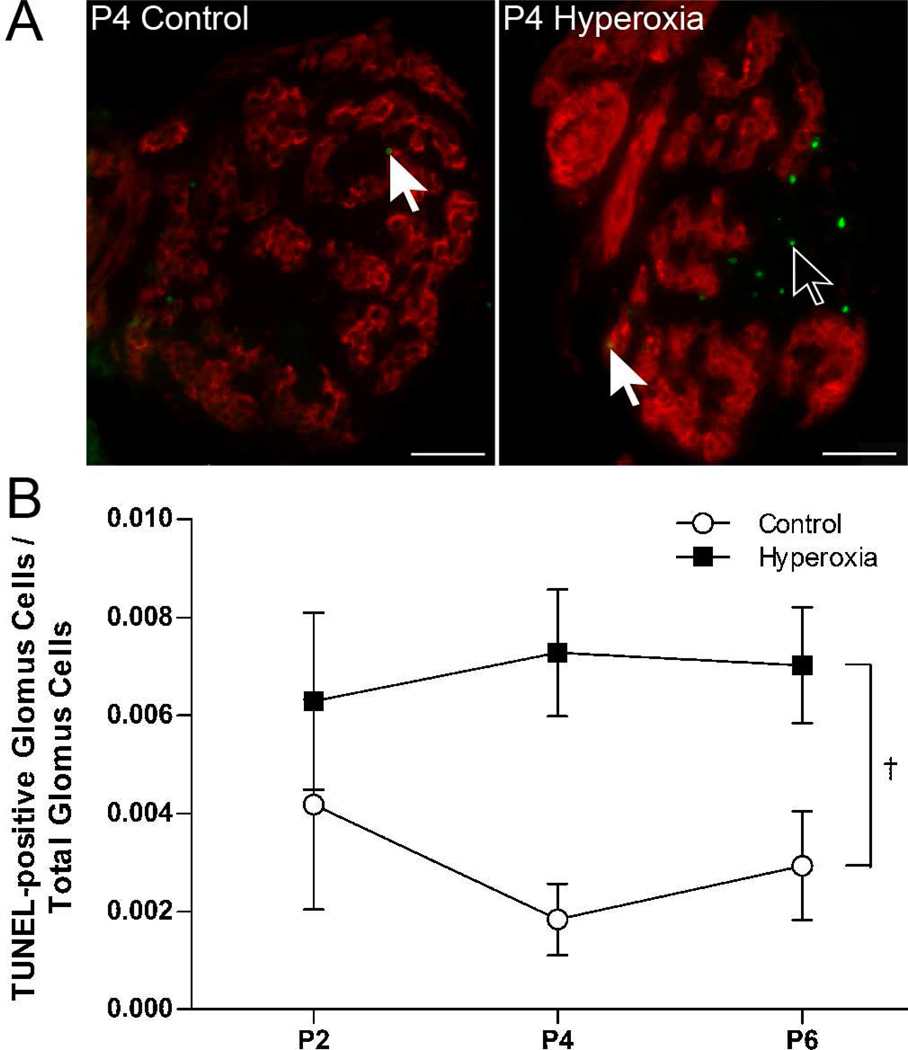Fig. 4.
(A) Representative photomicrographs showing TUNEL-positive cells in the carotid bodies of P4 rats reared in 21% O2 (Control) or 60% O2 (Hyperoxia). Red fluorescence indicates staining for tyrosine hydroxylase, a marker for glomus cells, and green fluorescence indicates positive staining for DNA fragmentation (TUNEL). Closed arrows point to TUNEL-positive glomus cells (red and green); open arrows point to TUNEL-positive non-glomus cells (green only). Scale bar = 50 µm. (B) The ratio of TUNEL-positive glomus cells to the total number of glomus cells in Control and Hyperoxia rats at P2, P4, and P6. Values are mean ± SEM; n = 6 per treatment group per age. †Significant main effect for treatment (P<0.05).

